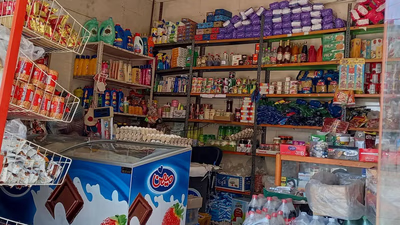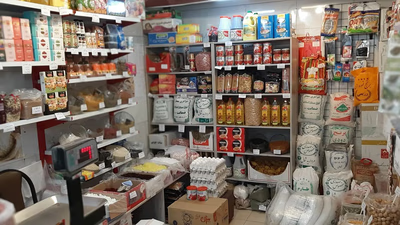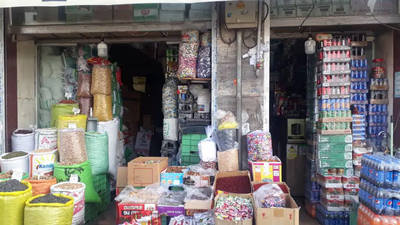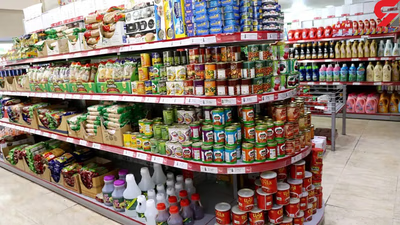
Explore the variety of dry fruits and groceries available.
Dry fruits and groceries are two categories of food products that can be found in stores, supermarkets and grocers. These two categories of products are mainly used due to their long shelf life and usability over a long period of time. Dry fruits include foods that can be consumed in a dry state or by removing the water in them. This includes dried fruits, nuts, seeds, grains, legumes, protein nuts, and other similar foods. Dried fruits are suitable as a long-term option for storage and use over longer periods due to less water exposure compared to fresh food. On the other hand, foodstuffs include products that are mainly made from seeds and grains and are used as the main sources of energy in the diet. This includes bread, rice, flour, corn, oats, and other grain products.
Both nuts and seeds play an important role in the human diet and are used as the main sources of energy, protein, fiber and other food elements. Also, these products are used for longer periods of time due to their long shelf life and ease of use, and are considered a good choice for storing and using in emergencies and travel. Supermarkets and grocery stores usually offer a wide selection of dried fruit and grocery products, which include:
- Dried fruits (such as dates, plums, blackberries, apricots and plums)
- Nuts (such as almonds, walnuts, peanuts, hazelnuts and pistachios)
- Seeds (such as sesame, pumpkin, sunflower and chia)
- Cereals (such as barley, wheat, rice and corn)
- Legumes (such as beans, peas, lentils and green lentils)
- Dried protein products (such as dried meat , dried sausage and ham)
- Pasta, spaghetti and other flour products
- All kinds of dry bread and biscuits
- Bran, whole wheat flour and aging products
- Bread (such as fresh bread, lavash bread, Berber bread and pizza bread)
- Rice (such as white rice, basmati rice and bulghur rice)
- Flour (such as white wheat flour, whole wheat flour and barley flour)
- Corn (such as Kandahar corn and semi-cooked corn)
- Various canned foods (such as canned fish, meat, vegetables and beans)
- Noodles and noodles (such as Ash noodles, whole grain noodles and various noodles)
- Tuna and shrimp
- All kinds of butter, oil and fats
- Eggs, cheese and dairy products
- All kinds of canned beans (such as pinto beans, peas and lentils)
- Salt, pepper, spices and edible oils
Dried fruit refers to foods that can be consumed in a dry state or by removing almost all of the water in them. Nuts usually include dried fruit, dried fruit, nuts, seeds, grains, legumes, dates, protein nuts (such as venison and dried sausage), and other similar foods. This type of food is suitable as a long-term option for storing and using for longer periods due to less water exposure compared to fresh food. Nuts are generally consumed as snack or snack products. Groceries refer to foods that are mainly prepared from seeds and grains. This includes products such as bread, rice, flour, corn, oats, etc. Nutrients are known as the main sources of energy for the body and are widely used in the preparation of foods and beverages. These foods are generally consumed fresh or cooked and play an important role in food diversity and human nutrition.
-

The Middle East and West Asia exhibit a varied landscape in the supply and demand of dried fruits and grocery products. Countries like Iran and Turkey are strong producers, leveraging their agricultural resources to meet both domestic needs and export demands. In contrast, nations such as Saudi Arabia, Lebanon, and the UAE rely heavily on imports due to limited domestic production capabilities. Economic factors, including oil revenues, influence these countries" agricultural development priorities. For instance, Saudi Arabia"s focus on oil has led to less investment in agriculture, resulting in significant imports of food products. Conversely, Iran"s government policies support agricultural growth, enhancing its production capacity for various goods like wheat and dried fruits. The region"s climatic diversity also plays a crucial role in determining which countries can effectively produce certain products. Countries with abundant water resources and favorable weather conditions are better positioned for agricultural success.
However, sanctions and economic policies can hinder trade dynamics, affecting both import and export activities across the region. Overall, the interplay of economic stability, government support for agriculture, and natural resource availability shapes the trade landscape for dried fruits and groceries in the Middle East.
-

Dry fruits and groceries significantly contribute to global trade, with billions of dollars exchanged annually. Their demand is driven by essential nutritional needs, influenced by factors such as changing consumer preferences, population growth, and health awareness. Major exporting countries include the USA, Brazil, China, and India. The trade dynamics are affected by production capabilities, weather conditions, pricing influenced by supply-demand fluctuations, and trade regulations like tariffs. Innovations in production and transportation also play a crucial role in enhancing trade efficiency. Environmental sustainability is increasingly impacting consumer choices in this sector. The ease of transport due to their lightweight nature allows dry goods to reach remote areas effectively. As global markets evolve with changing tastes and needs, the share of dry fruits and groceries in international trade remains fluid.
-

Middle Eastern countries exhibit a diverse landscape in food production and consumption, particularly in dried fruits and grocery items. While staples like rice, bread, and sugar are largely produced domestically, countries such as Iran, Turkey, and Saudi Arabia excel in dried fruit production due to favorable climatic conditions. The region"s strong companies leverage effective marketing strategies to build customer trust and foster long-term relationships through advertising and participation in trade events. Organizations like the UN and WTO provide valuable data on food import-export dynamics, aiding businesses in understanding market trends. Key products include legumes, nuts, olives, grains, dates, rice, olive oil, sugar, and spices. These items are integral to local diets and culinary practices. Successful companies focus on high-quality production aligned with international standards while utilizing advanced technologies for efficiency. They maintain robust distribution networks that facilitate product delivery across various markets.
The balance of imports and domestic production varies by country based on local conditions and market demands. "
-

Dry fruits and groceries are essential food categories known for their long shelf life and versatility. Dry fruits encompass a variety of products, including dried fruits, nuts, seeds, grains, legumes, and protein-rich items. These foods are ideal for long-term storage due to their reduced moisture content compared to fresh produce. Common examples include dates, almonds, walnuts, and various cereals. Groceries primarily consist of staple foods derived from seeds and grains such as bread, rice, flour, and corn. These items serve as vital energy sources in diets worldwide. Both categories are not only convenient for everyday consumption but also suitable for emergencies or travel due to their durability. Supermarkets typically offer a wide range of these products, catering to diverse dietary needs and preferences. The importance of dry fruits and groceries extends beyond mere sustenance; they contribute significantly to nutritional diversity and energy supply in human diets.




